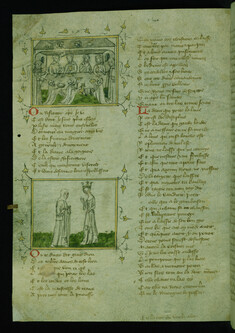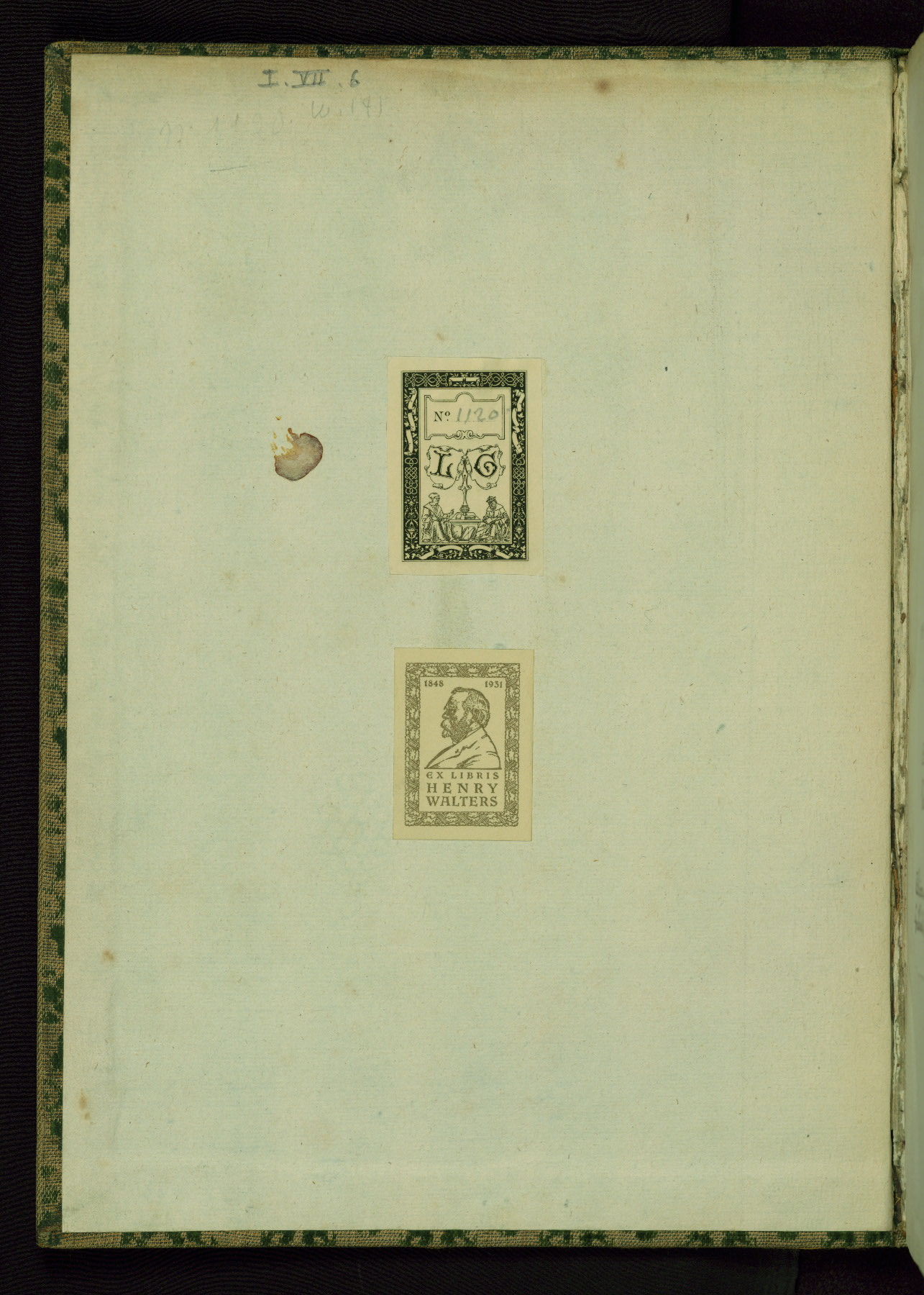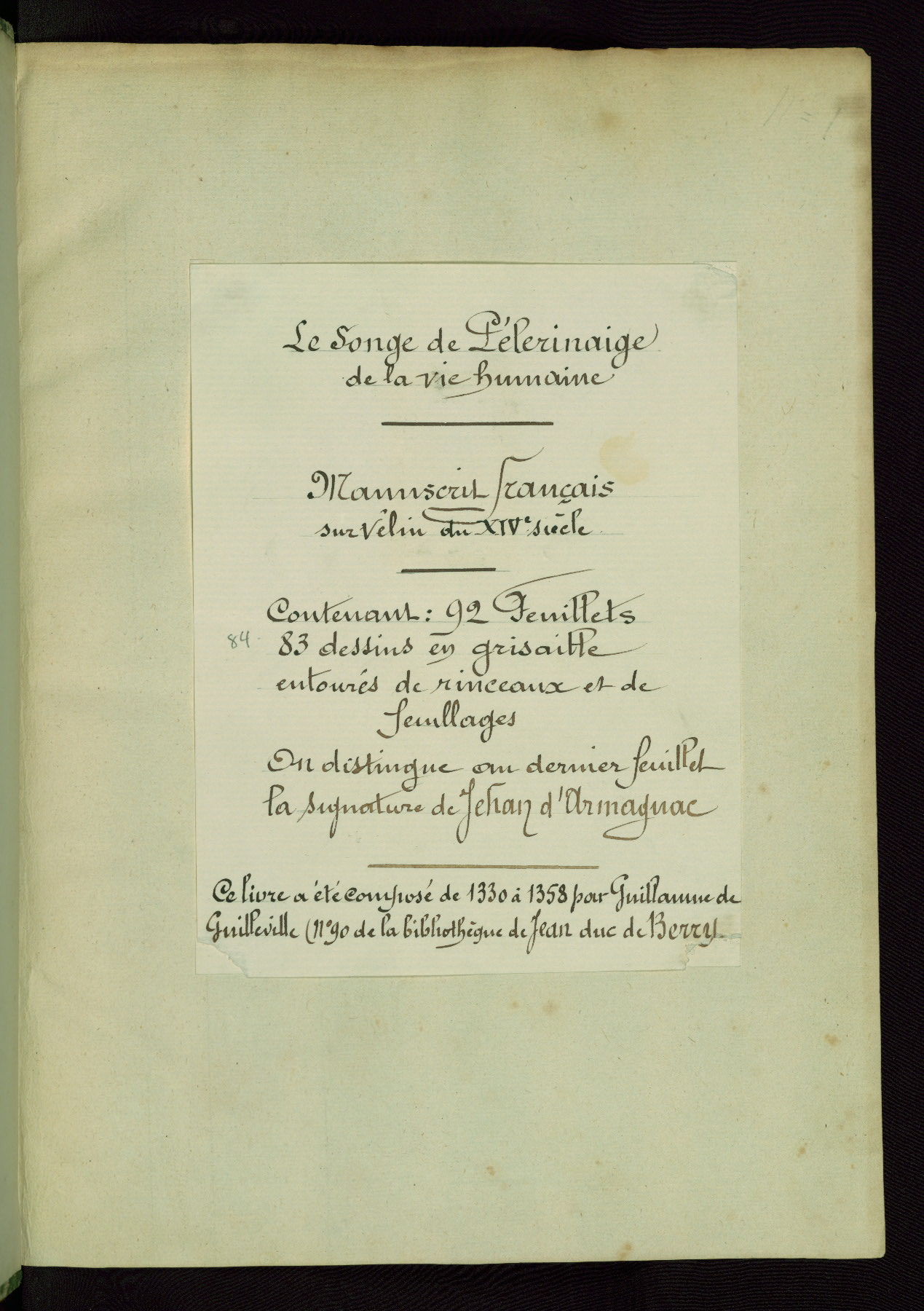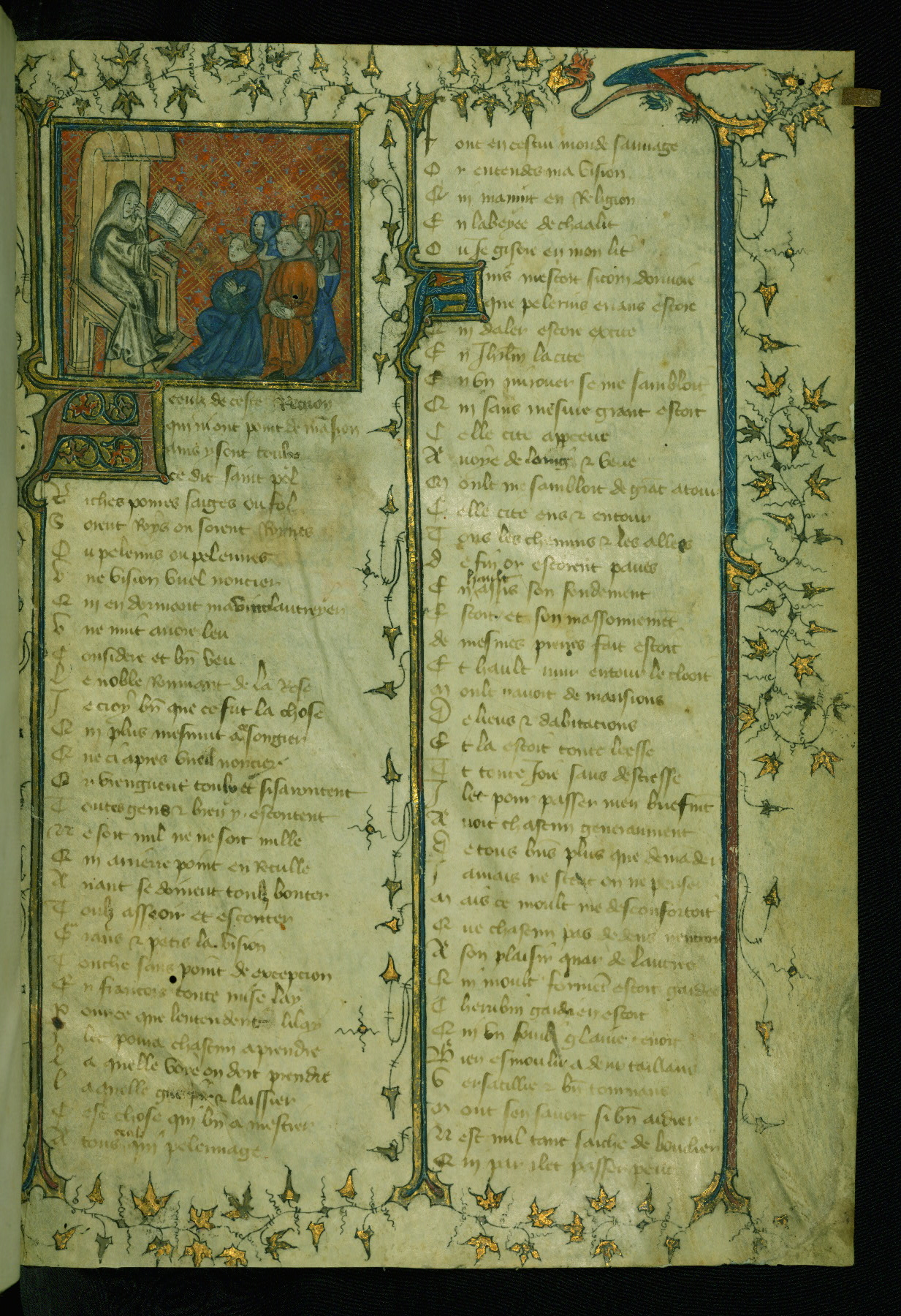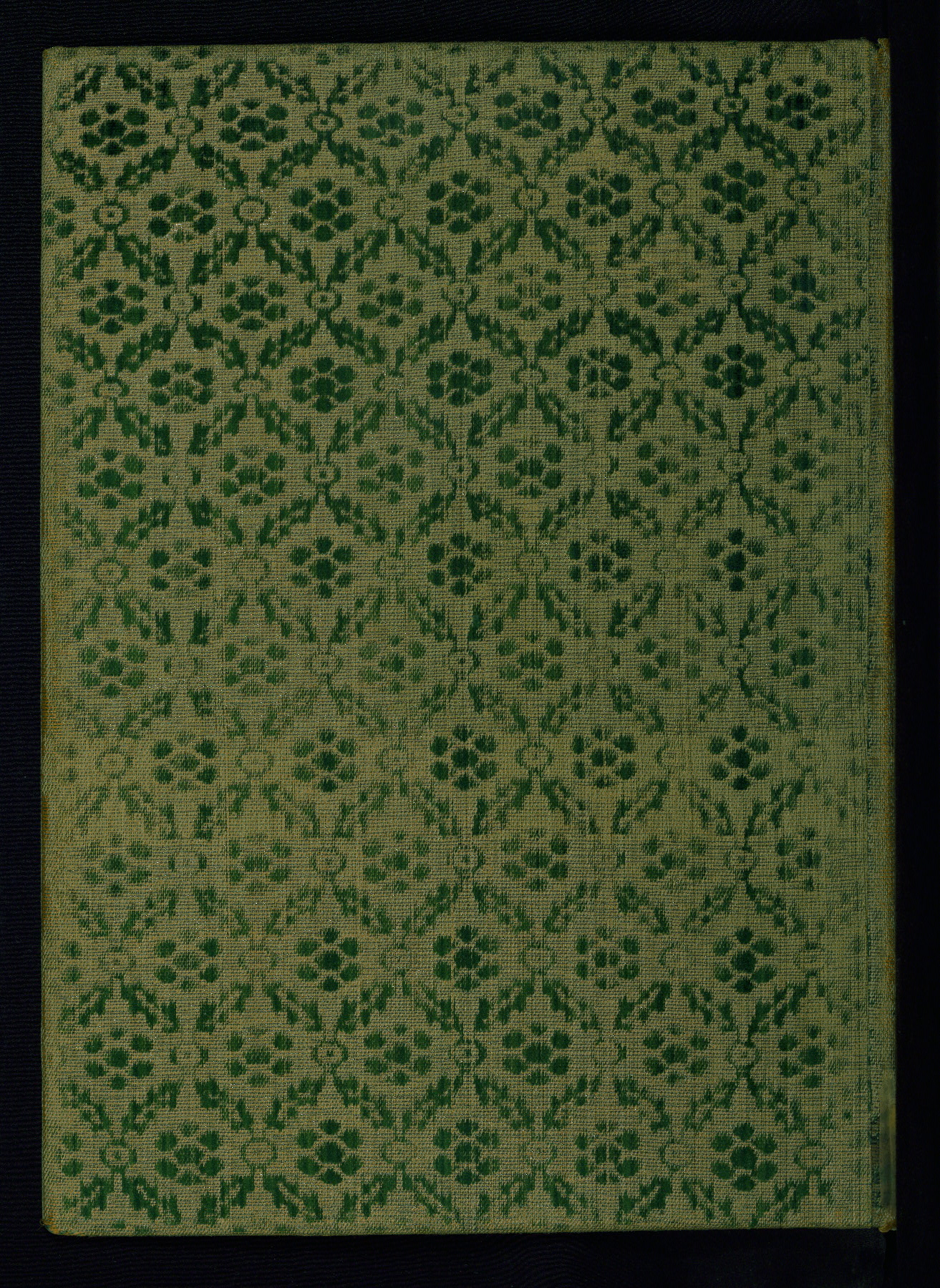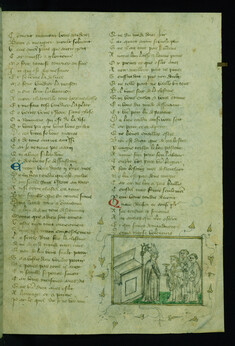Le pèlerinage de la vie humaine
(Manuscripts and Rare Books, Medieval Europe )
This allegorical text written in vernacular verse was inspired by Guillaume de Lorris's and Jean de Meun's Roman de la Rose. Composed ca. 1330-1332 by Guillaume de Digulleville with a second recension in 1355, this text represents the earlier of the two versions. Produced in northeast France in 1370, the Walters' copy contains a frontispiece miniature with a portrait of the author, as well as eighty-three tinted grisaille illustrations. These images are based on models consistent with contemporary thematic choices and contain abundant anecdotal detail, lending character to the text. As of spring 2014 the Institute for the Study of Textual History, Romance Languages in France has been gathering all reproductions of Digulleville's manuscripts. W. 141 is one of the few copies outside of France.
Provenance
Provenance (from the French provenir, 'to come from/forth') is the chronology of the ownership, custody, or location of a historical object. Learn more about provenance at the Walters.
Possibly Jacques of Armagnac, Duke of Nemours, 15th century [1]. Sotheby's Sale, London, May 25 1906, lot 373; purchased by J. and J. Leighton, London, 1906; acquired by Léon Gruel, Paris [2]; purchased by Henry Walters, Baltimore; by bequest to Walters Art Museum, 1931.
[1] Inscription reading "De da.../Cest livre est a moy J...", believed by De Ricci to reference Jacques of Armagnac
[2] N 1120 on bookplate
Exhibitions
| 1991 | Tales in the Telling: Secular Narrative Illustration in the Medieval Book. The Walters Art Gallery, Baltimore. |
| 1986 | Text and Image: Medieval Book Illustration. The Walters Art Gallery, Baltimore. |
| 1984-1985 | Illuminated Manuscripts: Masterpieces in Miniature. The Walters Art Gallery, Baltimore. |
Conservation
| Date | Description | Narrative |
|---|---|---|
| 3/7/2014 | Treatment | binding stabilized; examined for digitization; media consolidation; splits mended |
Geographies
France
(Place of Origin)
France, Paris (Place of Binding)
Measurements
Folio H: 10 5/8 × W: 7 5/8 in. (27 × 19.3 cm)
Credit Line
Acquired by Henry Walters, 1906
Location in Museum
Not on view
Accession Number
In libraries, galleries, museums, and archives, an accession number is a unique identifier assigned to each object in the collection.
In libraries, galleries, museums, and archives, an accession number is a unique identifier assigned to each object in the collection.
W.141
Do you have additional information?
Related Objects
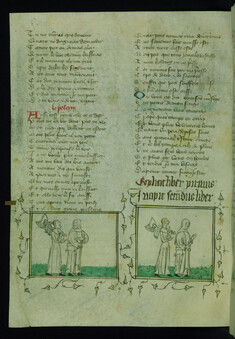
Memory Carrying Armor, Following Pilgrim, Who Turns Back and Points at Her and Memory Carrying Armor, Following Pilgrim

Porter Strikes Pilgrim with Club on Back, Pilgrim Enters Church; Pilgrim Sees Charity and Voluntary Poverty Approaching Church; Obedience and Discipline Enter Church, Pilgrim at Right
